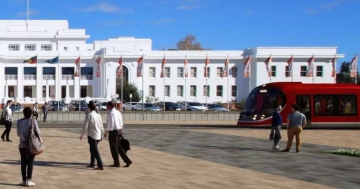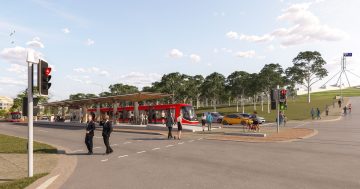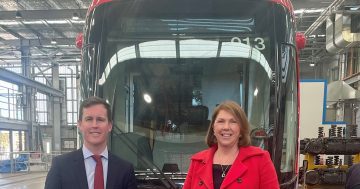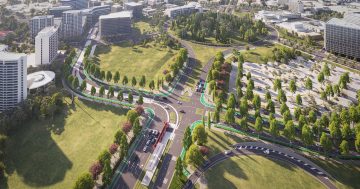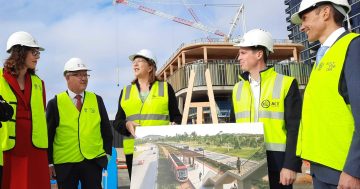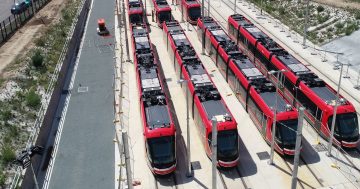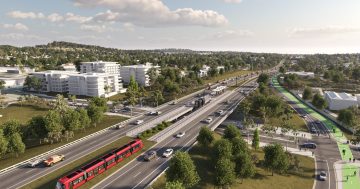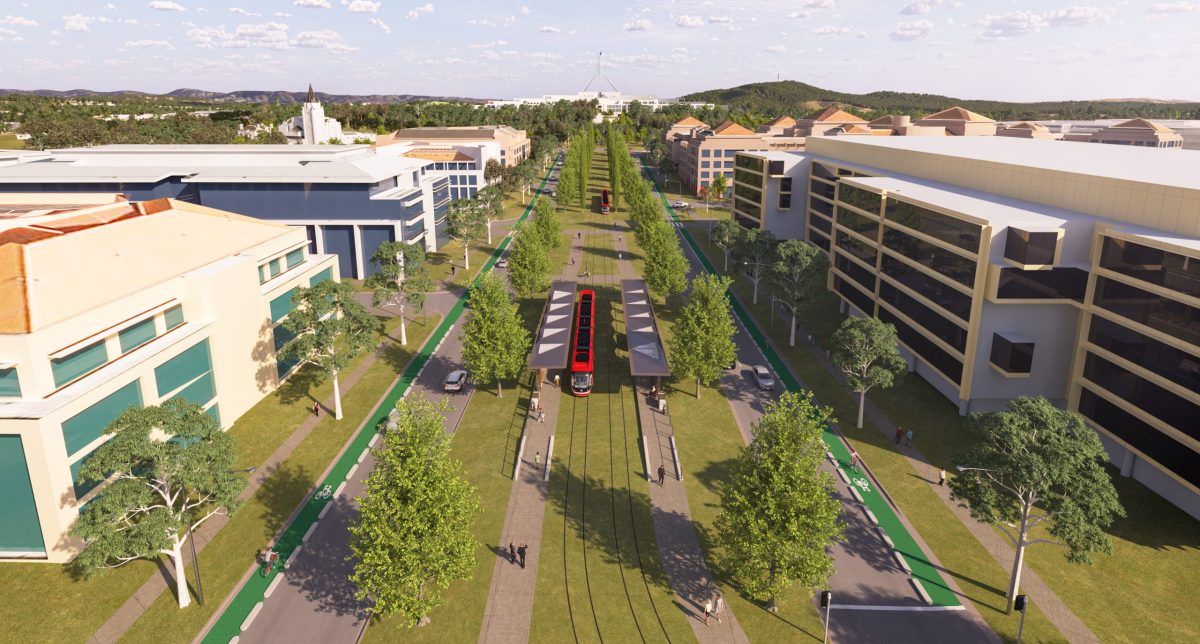
Back in the frame: A depiction of the light rail line and stop on Sydney Avenue in Barton. The line will be wire-free through the Parliamentary zone. Images: ACT Government.
The ACT Government is hedging its bets on the light rail Stage 2B route to Woden, adding the Barton ‘dog leg’ option to a new referral to the federal environment department.
This comes after doubts were raised last year about the viability of the preferred, more direct State Circle route, with officials advising the National Capital Authority of engineering and cost issues, including the narrowness of the turn off Commonwealth Avenue around Parliament House.
The government has also released a set of new renders depicting sections of both routes and stops along the way in the Parliamentary zone, including along Sydney Avenue in Barton.
It says adding an alternative route through Parkes and Barton will ensure the project remains flexible as planning work progresses.
But running through there will also raise complex heritage issues.
The original 2B route travelled along King George Terrace in front of Old Parliament House and then to Barton via Kings Avenue and Windsor Walk. The new depictions show the line running along Sydney Avenue to State Circle and then onto Adelaide Avenue.
Other renders show the third span to be built between Commonwealth Avenue Bridge and the bridge over Hopetoun Circuit in Deakin.
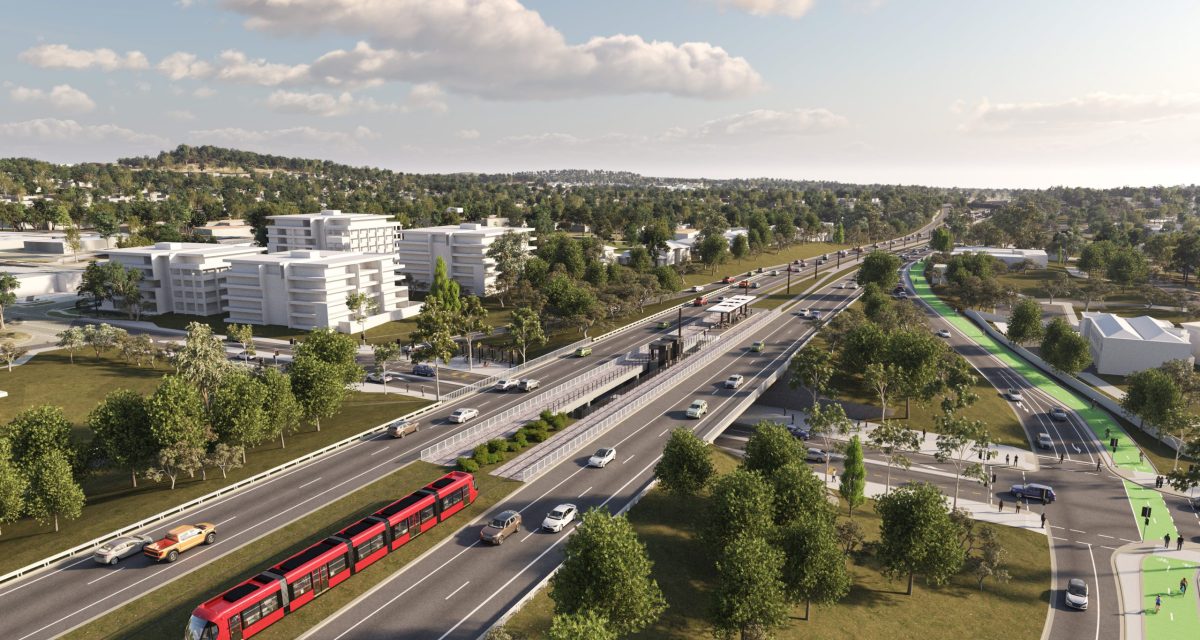
The light rail bridge over Hopetoun Circuit and stop. Also shown is the transition to overhead wire running onto Woden.
A government spokesperson said the revised EPBC Act referral would enable the government to consider alternative stops in the National Triangle and Barton.
The government would use this further investigation to determine the best alignment for Stage 2B, in terms of investment required and outcome delivered.
Proposed stops within the National Triangle and Barton were located at or near the Treasury building on King George Terrace, Bligh Street and Sydney Avenue.
“Each route presents different challenges and opportunities which will impact travel times such as road gradient, length of alignment, urban environment and stop location,” the spokesperson said.
“As part of the concept design and approval processes currently underway, technical and feasibility studies such as concept design, engineering, traffic, survey and utilities investigations have commenced. These studies will inform cost estimates and timeframes.”
Transport Minister Chris Steel insists the State Circle route remains viable and is the alignment identified in the National Capital Plan for Stage 2B, but the government was being prudent by covering all eventualities.
“By taking multiple options through the Environmental Impact Statement development process, we can compare the current preferred stops and alignment for Stage 2B on Commonwealth Avenue and State Circle with alternatives,” he said.
“This project is complex and requires multiple planning approvals from the Federal Government and Federal Parliament. A thorough approach, with a higher level of design and comparison of an alternative alignment, will help to reduce project risk as we work through each milestone on the way to Woden.”
Mr Steel told ABC radio that the last thing he wanted was for another issue to be raised and for the project to have to go back to square one.
“We want to present these higher levels of design so we can move through these processes as soon as possible,” he said.
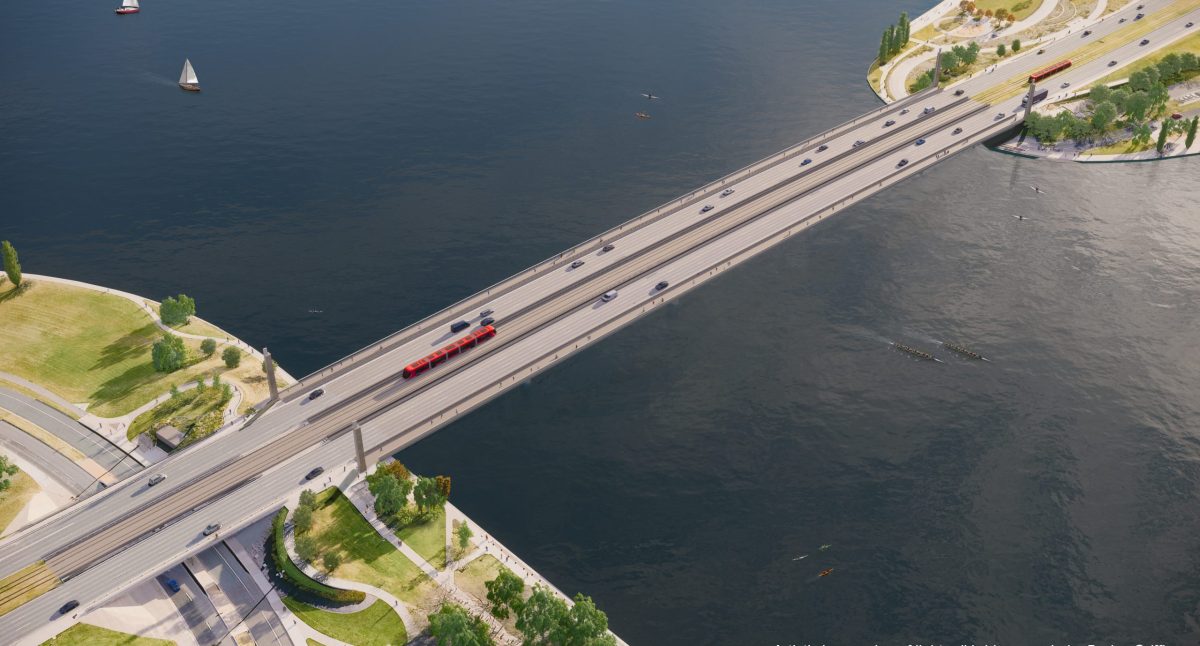
The third span of Commonwealth Avenue Bridge would take light rail across Lake Burley Griffin.
But he would not be drawn on whether light rail will be slower than the current Rapid buses which do the Woden-City run in 17 minutes.
He said it would depend on where you live and your destination, given that some areas, such as Hughes, North Curtin, Yarralumla and Deakin, did not have access to a Rapid route.
“This will provide you with rapid transit for the first time both into the parliamentary triangle and into Civic and the north,” Mr Steel said.
“We’ll get a greater understanding of the travel times once the design has been done around the stops and alignment, and we’ll be making that available to the community and engaging with them about the design, but it will be a different route to the current bus routes. It will have stops that don’t currently exist.”
Mr Steel said buses would still be running from the southside for those who wanted a quicker route.
“But this will be a mass transit line that will have high capacity that would deliver the same frequent reliable service that we’ve seen on the northside that has been embraced by Canberrans,” he said.
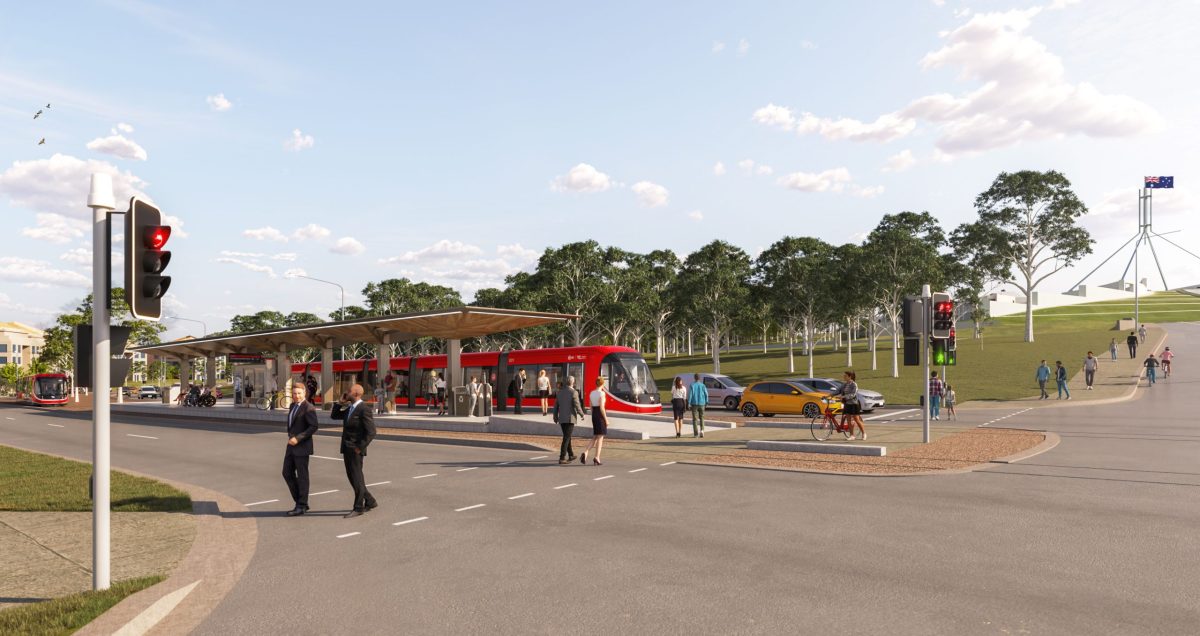
The Kings Avenue, Parliament House stop.
Chief Minister Andrew Barr said the light rail would deliver benefits for Canberra for decades to come and be a congestion buster.
“It will create thousands of jobs and make sure our growing city has the infrastructure it needs,” he said.
“Canberra’s population will grow beyond half a million people in the coming years. We need to progressively build the transport network a bigger city needs to avoid the congestion problems faced by other cities.”
The Canberra Liberals say they will axe Stage 2B and not proceed with further light rail extensions, but they have yet to release their public transport policy.
Leader Elizabeth Lee said the project did not stack up and the government had refused to be upfront about the cost and how long it would take to complete.
She said it was alarming that Mr Steel repeatedly dodged questions about whether the light rail journey between Woden and the City would take longer than the Rapid bus.
“It is clear that Labor and the Greens are wedded to this project no matter what cost and that should ring alarm bells for many Canberrans,” Ms Lee said.
The government says preliminary work is progressing on the detailed Environmental Impact Statement (EIS), which is expected to be required following the updated EPBC referral.
Consultation will occur this year on updated infrastructure, including new stops and active travel connections on the line to Woden, including the Parliamentary Triangle.
Feedback will be used to inform the EIS and the draft concept design for the extension of the light rail line.
To learn more, visit act.gov.au/lightrailtowoden.












